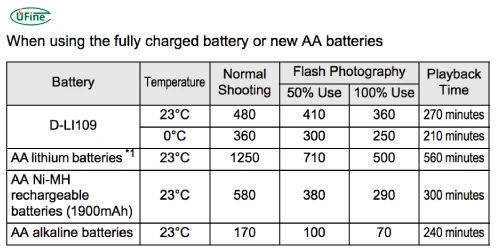
- Part 1. Understanding the D Battery
- Part 2. D dattery voltage explained: why it matters
- Part 3. Types of D batteries
- Part 4. D Battery size and shape
- Part 5. Weight and portability
- Part 6. Pros and Cons of D batteries
- Part 7. Common applications
- Part 8. Rechargeable vs. non-rechargeable D batteries
- Part 9. How long does a D battery last?
- Part 10. D cell battery chargers: what to know
- Part 11. Expert insight from Ufine Battery
- Part 12. Final thoughts
- Part 13. FAQ
Part 1. Understanding the D Battery
A D battery, also known as a D cell, R20 battery, or size D cell, is one of the largest standard cylindrical battery types. Because of its larger size, it can store much more energy than smaller batteries like AA or AAA, making it ideal for devices that need strong, long-lasting power.
Originally developed in the early 20th century to power flashlights, D batteries have since become a staple in consumer and industrial devices—from emergency lanterns to portable radios. The fundamental working principle remains the same: converting chemical energy into electrical energy through an electrochemical reaction between electrodes and electrolytes, providing a steady current flow.
Part 2. D dattery voltage explained: why it matters
A standard D battery provides 1.5 volts, but that number tells only part of the story. The actual output voltage depends on the battery chemistry, load, and discharge rate.
Here’s a D dattery voltage chart of how different D batteries perform:
| Battery Type | Nominal Voltage | Typical Range (Loaded) | Performance Notes |
|---|---|---|---|
| Alkaline D Battery | 1.5V | 1.6V → 1.1V (as it discharges) | Reliable for low- to medium-drain devices |
| NiMH Rechargeable D | 1.2V | 1.3V → 1.0V | Delivers stable output for frequent use |
| Lithium D Battery | 3.6V | 3.7V → 3.2V | High power, best for extreme conditions |
Ufine Battery Lab Insight: In our in-house tests, alkaline D batteries lost around 25% of their voltage after 4 hours of continuous use in high-drain flashlights, while lithium D cells maintained above 3.4V even after 8 hours under the same conditions.
Voltage affects more than you think:
- Brightness: In lanterns and flashlights, higher and more stable voltage maintains brightness longer.
- Torque: For battery-powered tools, stable voltage ensures constant torque output.
- Runtime: Devices with efficient voltage management can last 2–3× longer with lithium D batteries.
Bottom line: When choosing a D battery, don’t just look at the nominal 1.5V label—consider voltage stability, discharge curve, and device compatibility.
Part 3. Types of D batteries
D batteries come in various chemistries, each suited for different needs:
1 Alkaline D Batteries
- Affordable, widely available, and excellent for low- to moderate-drain devices such as toys or radios.
- Shelf life: 5–10 years.
- Drawback: Voltage drops quickly under heavy load.
2 NiMH Rechargeable D Batteries
- Environmentally friendly and reusable up to 1,000 times.
- Perfect for devices used daily.
- Drawback: Lower nominal voltage (1.2V) means slightly shorter runtime in high-drain devices.
3 Lithium D Batteries
- High-performance choice for demanding or outdoor environments.
- Operate well in temperatures from -40°C to +60°C.
- Drawback: Higher upfront cost, but superior longevity.
4 Carbon-Zinc D Batteries
- Older, less efficient type used in low-drain devices.
- Low cost, but limited capacity and shorter lifespan.
Lithium VS. Alkaline Batteries: A Comprehensive Comparison
Part 4. D Battery size and shape
The size and shape of D batteries make them uniquely suited for larger devices. A standard D battery is 61.5mm in length and has a 34.2mm diameter. This large surface area allows for more active material within the battery, which translates into greater energy capacity.
While some may see the larger size as a disadvantage in terms of portability, it is precisely this design that gives the D battery its power-packed performance. Devices like boom boxes, camping lanterns, and battery-powered tools heavily rely on this capacity for consistent and prolonged use.
A standard D battery measures 61.5 mm in length and 34.2 mm in diameter.
Part 5. Weight and portability
The weight of a D battery is another consideration, especially when used in portable devices. Alkaline D batteries weigh approximately 140-150 grams, while rechargeable versions, particularly NiMH D batteries, can be heavier due to their internal components. While this weight may seem excessive, especially compared to lighter battery types, it’s a small trade-off for the extended lifespan and performance they offer.
For example, in devices like emergency radios or portable fans, the heavier weight of the D battery is a reasonable compromise given the reliability and duration of power provided. This is especially important during outdoor activities or in locations where changing batteries frequently is impractical.
| Battery Type | Average Weight |
|---|---|
| Alkaline D | 140–150 g |
| NiMH Rechargeable D | 160–180 g |
| Lithium D | 120–140 g |
While heavier than smaller batteries, D batteries provide a far longer runtime per cell.
For outdoor, emergency, or industrial use, this extra weight is a reasonable trade-off for power stability and longevity.
Part 6. Pros and Cons of D batteries
✅ Pros
- High Capacity: Can power devices for extended periods.
- Long Shelf Life: Especially for alkaline and lithium types.
- Versatile Use: Available in both disposable and rechargeable forms.
❌ Cons
- Bulk and Weight: Not ideal for compact or lightweight devices.
- Higher Upfront Cost: Rechargeables are more expensive initially.
Part 7. Common applications
D batteries are preferred in devices that need sustained power output, such as:
- Large flashlights and lanterns
- Portable radios and boom boxes
- Medical and emergency equipment
- Battery-powered fans or pumps
- Camping gear
- High-drain remote controls
For any situation requiring long runtime and consistent voltage, D batteries remain the top choice.
Part 8. Rechargeable vs. non-rechargeable D batteries
| Feature | Disposable (Alkaline) | Rechargeable (NiMH / Lithium) |
|---|---|---|
| Cost | Low upfront | Higher upfront, lower long-term |
| Reusability | Single-use | 500–1000 cycles |
| Capacity per Charge | 12,000–18,000 mAh | 2,000–10,000 mAh |
| Best For | Infrequent use | Daily or industrial use |
Rechargeables reduce waste and save money over time, while disposables are more convenient for rarely used devices.
Part 9. How long does a D battery last?
Battery life depends on chemistry, usage, and temperature:
| Battery Type | Typical Lifespan / Use Case |
|---|---|
| Alkaline D | Up to 10 years in low-drain storage, several days of continuous flashlight use |
| NiMH D | Hundreds of recharges; shorter runtime per charge |
| Lithium D | Longest operational life and best cold-weather performance |
Part 10. D cell battery chargers: what to know
When choosing a D cell charger:
- Match Chemistry: Ensure compatibility with NiMH or Lithium types.
- Charging Rate: Moderate charging (0.5C–1C) extends battery lifespan.
- Safety: Look for temperature monitoring, overcharge protection, and auto shutoff.
Investing in a smart charger ensures your rechargeable D batteries maintain their full capacity and safety across hundreds of cycles.
Part 11. Expert insight from Ufine Battery
At Ufine Battery, we specialize in designing and manufacturing custom lithium batteries for industrial and professional applications.
Our engineering team continuously tests voltage stability, cycle life, and temperature resistance to ensure reliable power for your most demanding equipment.
If you’re sourcing high-capacity or rechargeable D batteries, contact Ufine Battery for technical consultation or OEM solutions
.
Part 12. Final thoughts
D batteries continue to be a reliable power source across industries, balancing capacity, performance, and longevity. Whether you’re lighting a campsite, powering critical equipment, or building custom electronics, choosing the right D battery ensures consistent, dependable energy when it matters most.
Part 13. FAQ
What is the voltage of a D battery?
A standard D battery outputs 1.5 volts, while rechargeable NiMH D cells output 1.2 volts, and lithium types up to 3.6 volts.
Why does voltage matter?
Voltage determines device brightness, torque, and runtime. A stable voltage keeps devices operating at full performance for longer periods.
Are all D batteries interchangeable?
No. Devices designed for 1.5V may not support 3.6V lithium cells. Always check your device’s voltage requirements.
How can I make my D batteries last longer?
Store them in a cool, dry place and avoid deep discharges. Recharge NiMH batteries before they fully drain to extend their cycle life.
Related Tags:
More Articles

What is the Difference Between Silver Zinc Battery vs. Lithium-ion Rechargeable?
Compare silver zinc and lithium-ion rechargeable batteries: energy density, cycle life, safety, cost, and uses in drones, medical devices, EVs, and electronics.
What are Watts and Watt Hours in Battery?
Understand watt vs watt-hour in batteries: key differences, how to calculate capacity, and why they matter. Includes free comparison table.
Best 10 Blood Pressure Monitor Battery Review: Finding the Most Reliable
Are you looking for a reliable Blood Pressure Monitor battery? Here is a complete guide with the top 10 best blood pressure monitor batteries.
Bluetooth Headphone Battery Guide: All You Need to Know
Maximize headphone battery life with expert tips! Learn how to charge, check, troubleshoot, and choose the best bluetooth headphone battery in 2025.
LiFePO4 Battery VS. Lithium-ion Polymer Battery: Which One Is Best?
Comprehensive comparison of LiFePO4 vs Lithium Ion Polymer batteries: energy density, safety, lifespan, cost. Find out which battery suits your needs in 2025.




